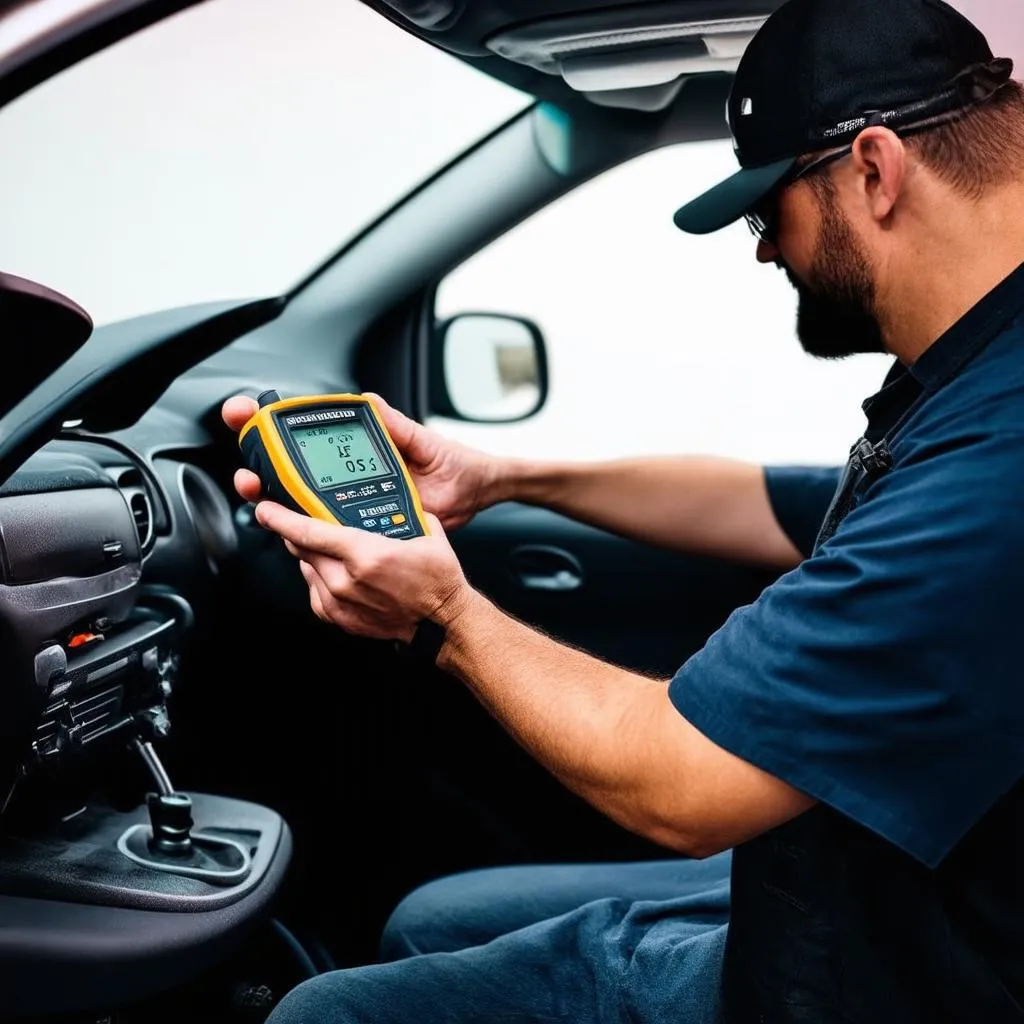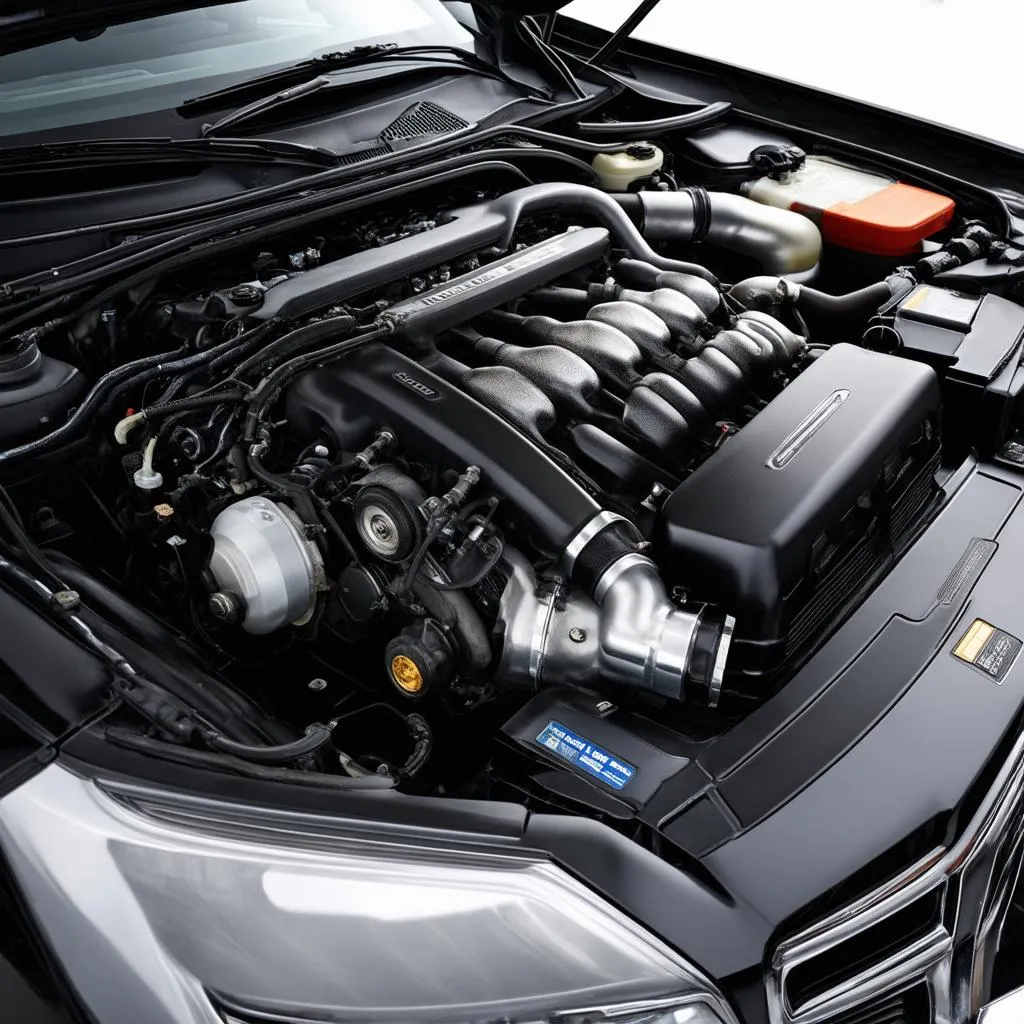Imagine this: you’re cruising down the highway, the wind in your hair, your favorite tunes blasting through the speakers, and suddenly… bam! The check engine light flashes on your dashboard, throwing a wrench into your blissful drive. It’s like your car is trying to speak to you, but in a language you don’t understand. Well, fret not! That flashing light is nothing but your car communicating through Car Obd Ii Codes, and this article will equip you with the knowledge to decipher those cryptic messages.
What are Car Obd Ii Codes and Why Should You Care?
Car OBD II codes, also known as On-Board Diagnostics codes, are standardized codes that your car’s computer system generates to indicate a malfunction. Think of them as your car’s way of saying, “Hey, something’s not quite right here.”
But why are these codes so important?
- Early Detection and Prevention: Just like how a slight cough can be a sign of an impending cold, these codes can alert you to minor issues before they escalate into major (and expensive) problems.
- DIY Diagnostics: Armed with a basic understanding of OBD II codes and a code reader (more on that later), you can troubleshoot basic car problems yourself, saving you a trip to the mechanic.
- Peace of Mind: Knowing what’s going on with your car empowers you to make informed decisions about its maintenance and repair.
 OBD2 Scanner
OBD2 Scanner
Cracking the Code: Understanding OBD II Code Structure
OBD II codes might seem like gibberish at first glance, but they follow a logical structure that’s surprisingly easy to understand.
A typical code looks something like this: P0301
Let’s break it down:
- First Character: This indicates the system related to the fault. For instance, “P” stands for powertrain (engine and transmission), “B” for body, “C” for chassis, and “U” for network and communication systems.
- Second Character: This digit tells you whether the code is generic (0) or manufacturer-specific (1).
- Third Character: This one pinpoints the specific system within the broader category indicated by the first character. For example, “0” could signify fuel and air metering, “1” for fuel and air metering (injection circuit), and so on.
- Fourth and Fifth Characters: These last two digits specify the actual fault within the system.
So, in our example P0301, the code tells us there’s a misfire detected in cylinder 1.
Common Car Obd Ii Codes and What They Mean
Here are some of the most frequently encountered car OBD II codes:
- P0420: Catalyst System Efficiency Below Threshold (Bank 1). This often signals a failing catalytic converter, a crucial component for emission control.
- P0171: System Too Lean (Bank 1). This indicates that the engine is running on a lean air-fuel mixture, potentially leading to reduced performance and increased emissions.
- P0300: Random/Multiple Cylinder Misfire Detected. As the name suggests, this code indicates that one or more cylinders in the engine are misfiring, potentially causing rough idling, poor acceleration, and increased fuel consumption.
 Car Engine
Car Engine
How to Read and Diagnose Car Obd Ii Codes
Now that you understand the basics, it’s time to put that knowledge into action. To read your car’s OBD II codes, you’ll need an OBD II scanner. These handy devices are readily available online and at auto parts stores.
Once you have a scanner, locate your car’s OBD II port, usually located under the dashboard on the driver’s side. Plug in the scanner, turn on the ignition (but don’t start the engine), and follow the on-screen instructions to retrieve the codes.
But hold on! Simply reading the codes is just the first step. You’ll need to consult a reliable OBD II code database or repair manual to understand the specific code and its potential causes. Online forums dedicated to your car make and model can also be invaluable resources for troubleshooting.
A Word of Caution: While DIY diagnostics can be empowering, remember that complex car problems often require professional attention. If you’re unsure about anything, it’s always best to consult a qualified mechanic.
Beyond the Technical: The Spiritual Side of Cars
Interestingly, in many cultures, cars are seen as more than just machines. They are often imbued with a sense of personality and even spiritual significance. For instance, the ancient Chinese practice of Feng Shui emphasizes the importance of harmony and balance in all aspects of life, including our vehicles. While OBD II codes might seem purely technical, addressing them promptly can be seen as a way of maintaining the health and wellbeing of both your car and yourself.
Have More Questions About Car Obd Ii Codes?
We’ve just scratched the surface of the fascinating world of car OBD II codes! Here are some other questions you might be wondering about:
- Can OBD II codes clear themselves?
- How much does it cost to fix an OBD II code?
- What are the most common OBD II codes for specific car brands like Audi? (Check out our article on Audi OBD II Codes)
You can find answers to these and many other car-related queries right here on Techcarusa.com!
Need Help with Your Car Diagnostics?
Our team of expert automotive technicians is available 24/7 to assist you with all your car diagnostic needs. Contact us on Whatsapp at +84767531508 and let us help you get to the bottom of those pesky car troubles.
Drive with Confidence: Knowledge is Power
Understanding car OBD II codes empowers you to be a more informed and proactive car owner. By paying attention to your car’s “language” and addressing issues promptly, you can ensure smoother, safer, and potentially less expensive drives for years to come.